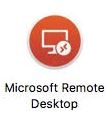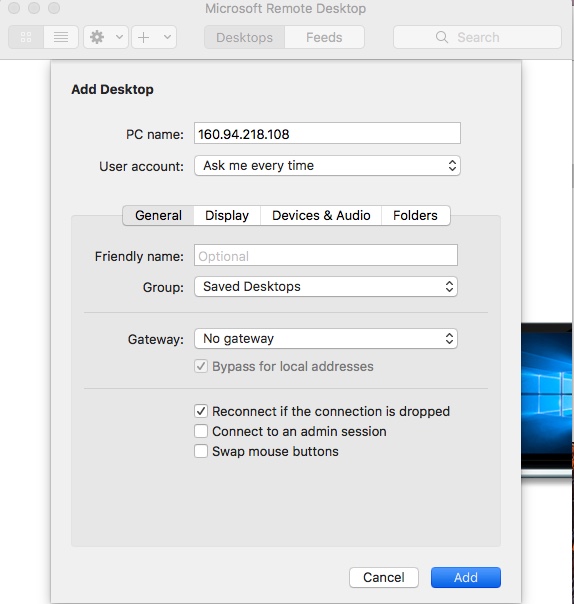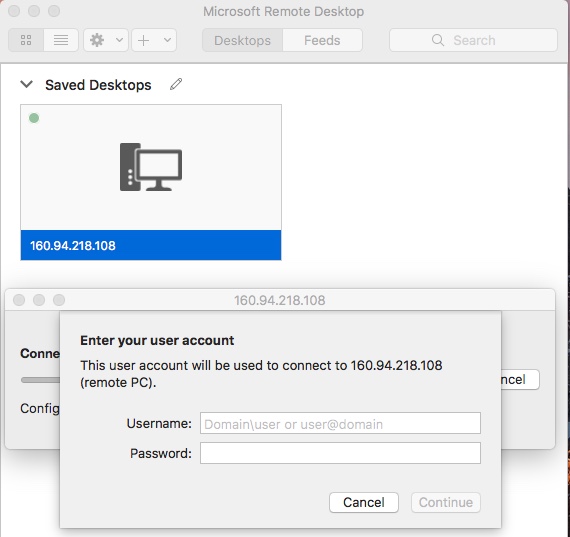This article will help you set up a Remote Desktop connection using Microsoft Remote Desktop on a computer. Before proceeding, you'll need to download Microsoft Remote Desktop from the Mac App Store (Apple ID needed). However, if your computer is managed by Desktop Support, Microsoft Remote Desktop can be downloaded from Self Service, located in the Applications folder:
![]()

When running Self Service, you might be prompted to log in; use your UMN ID and password. To locate Self Service, enter "Microsoft Remote Desktop" in the Search bar. Click to install, once successfully installed, proceed to the following steps.
Connecting to a remote computer
- Launch Microsoft Remote Desktop from the Applications folder.

- Click Add Desktop to configure your connection, then enter the device IP address or Host Name.
- Contact Help if you do not know configuration information such as Host Name or IP address.
- Click Add. The desktop will be saved.

- Click on the saved desktop.
- When entering your Username, be sure to enter it as: ad.umn.edu\<username>.
- Enter your UMN password and click Continue.
- Note: You may get a " Connection not Secure" warning. Proceed and click on "Continue".

- Note: You may get a " Connection not Secure" warning. Proceed and click on "Continue".
- After successfully logging in, the remote session will appear in full screen. Move your mouse cursor to the top of the screen and a menu will drop down, where you can adjust screen size or quit. To quit, Click on the Microsoft Remote Desktop drop down menu and select "Quit Microsoft remote Desktop". Or, you can go to the Windows Start Menu, click on the little person icon and select Sign Out.
Potential Problems
Remote Desktop access: You will need to be added as an authorized Remote Desktop user to any Windows computers that you'd want to connect to. Contact Help for assistance with getting authorized as a remote desktop user on a computer.
VPN: Also, you will need to connect to a VPN client before launching Microsoft Remote Desktop to access computers on the University network. If using the Cisco Secure Client VPN, you'll need to use the Full Tunnel - General Access VPN Pool in the client. Contact Help to assist with adding this setting, if needed.
Private vs Public Networks: If the remote Windows computer network is not set to Private or Work (ie Public), the firewall will block the connection. Change the network location to Work.
Account not in allowed Remote Settings. The user account being used for validation must exist on the remote computer, and be in the remote access list.
Power Management: By default, most computers allow the power management utility to turn off network devices to save power when the device sleeps. Remote access is not possible when the network adapter is powered down. Uncheck the option to 'Allow the computer to turn off this device to save power' in the adapter settings on the remote computer.
Remote Desktop Connection: The app 'Remote Desktop Connection" (previously bundled with Microsoft Office versions) does not connect to Windows devices any longer. The newest version which can connect to Windows 10 is named 'Microsoft Remote Desktop'.
- If you run into any difficulties, please be sure to contact Help for assistance.
